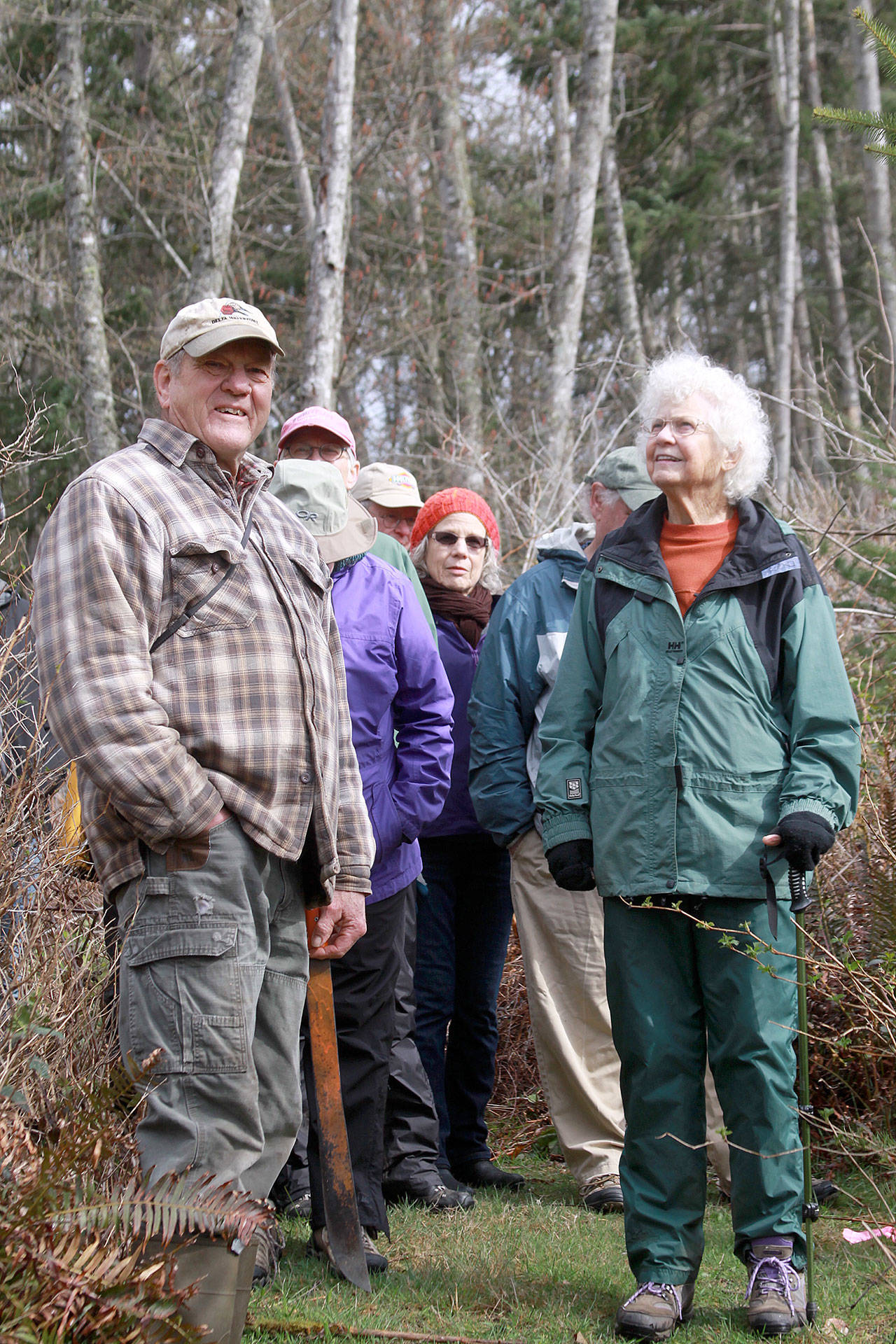When Dr. Sievert Rohwer moved to Whidbey Island in the early 1980s, he remembered seeing large migrations of salamanders trying to cross Cultus Bay Road. Most didn’t make it.
“There were dead salamanders everywhere,” he recalled. “I believe it was the Northwest salamander. But they’re gone now. You never see one here anymore.”
Rohwer, a retired University of Washington zoology professor, takes an active interest in such matters. As an owner of a forest and wetland near Cultus Bay, he realized he could restore wildlife diversity to the natural world around him.
That started Rohwer on a mission to improve wildlife habitat on his property in hopes all creatures would benefit, particularly amphibians and waterfowl. He recently led a small group of Whidbey Camano Land Trust members on a tour of his land, showing the progress he and his family have made on their 34 acres.
“How many hours a day do you spend out here?” one person asked.
“Probably all day,” Rohwer laughed. “I’m always doing something if I’m not writing papers.”
Rohwer is curator emeritus of ornithology at the UW’s Burke Museum, but he also holds a soft spot for frogs, toads and other amphibians. By restoring the different habitats on his property, he’s brought back a healthy population of native amphibians.
“I didn’t really shift my interest from birds,” he said. “It’s just that the amphibians needed more help than the birds did on this property.”
Rohwer’s property is a water world of wonder. Cultus Creek flows through it via a series of beaver ponds that provide breeding sites for amphibians and homes for waterfowl. He sees fewer beavers than he once did but appreciates the work they do.
At one pond, tour visitors marveled at the sound of a Pacific tree frog croaking in the distance.
“Are we sure we’re on Whidbey Island?” someone asked.
Rohwer plays the role of pond caretaker, removing invasive reed canary grass that creeps in while also keeping an eye out for — and removing — non-native bullfrogs whose voracious appetites include native amphibians.
But most of Rohwer’s restoration work is concentrated on reforestation. He’s replanted cedar, cottonwood, spruce, hemlock, and other tree species, focusing efforts in an upland area that once held a dying stand of alders. He cut that stand in 2011 to make room for the new trees, allowing for increased forest diversity. Such diversity attracts a wider variety of native wildlife and sets up the forest for old growth potential.
“Everyone who sees the place is blown away by the amazing array of habitats on the property and the hard work that Sievert did to enhance them,” said Ryan Elting, Land Trust conservation director. “There’s a tremendous amount of thought and heroic effort that’s gone into that.”
Cultus Bay is a high-protection priority for the Land Trust, which is working with Rohwer on a conservation easement that will follow his wishes to protect the property permanently in its natural state. A conservation easement is a legal agreement between the landowner and a qualified organization, such as the Land Trust, that extinguishes future development rights on the land.
“I don’t want to see this parcel subdivided,” Rohwer said. “I grew up in Florida. When I look at where I once caught wild critters, nothing’s there anymore — just houses and citrus groves.”
On Whidbey, Rohwer is reminded daily of the giant trees that used to tower over his land. Throughout the property, and along the trail, several large, burned, hollow cedar snags stand out, remnants of the days when settlers cleared the land for a strawberry farm.
Janet Hall, one of those on the tour, said she’s glad she made it. “Any time you’re able to visit a property the Land Trust is interested in, you know it’s going to be special,” she said. “And, it’s a bonus to talk to the landowner. It’s obvious Sievert has amazing passion for this land.”
The Whidbey Camano Land Trust is a nonprofit nature conservation organization that actively involves the community in protecting, restoring and appreciating the important natural habitats and resource lands that support the diversity of life on our islands and in the waters of Puget Sound.
For more information, visit www.wclt.org, email info@wclt.org, or call 360-222-3310.
• Ron Newberry is the communications manager with the Whidbey Camano Land Trust, a nonprofit nature conservation organization that protects and restores important natural habitats and resource lands in Island County.


